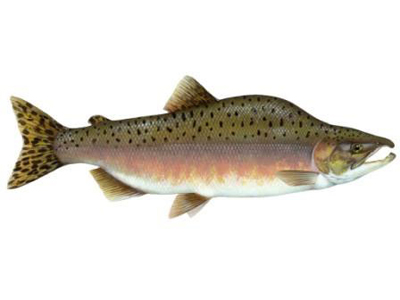 The pink salmon is the smallest and most abundant Pacific salmon, typically weighing 2-3 pounds.
The pink salmon is the smallest and most abundant Pacific salmon, typically weighing 2-3 pounds.
Pink salmon can be distinguished from other Pacific salmon by the presence of large dark oval spots on the back and the entire caudal fin. Ocean phase pink salmon are steel blue to blue-green on the back, silver on the sides, and white on the belly.
During spawning season, males develop a hump on their back and become dark on the back and red with brownish green blotches on the sides. Breeding females are similar but less distinctly colored. Pinks live for two years before returning to their natal streams to spawn.
The range of this species includes much of North America’s Pacific Northwest, as well as parts of Asia.
In 1956, pink salmon were introduced into Lake Superior. After decades of management, self-sustaining populations of pink salmon are now found in all of the Great Lakes.
The meat of pink salmon is highly prized for its pink color, tender texture, and delicate flavor. Pink salmon are also known as “humpies” or humpback salmon.
Related Information